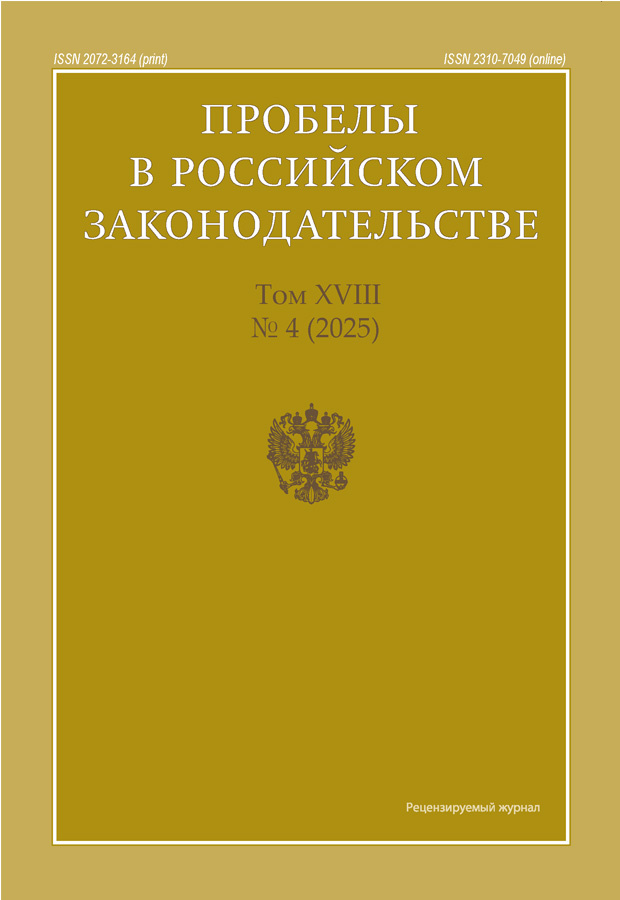Impact of the use of driving simulators on the quality of driver candidate training
- 作者: Tarasov A.Y.1, Tarasova I.A.1
-
隶属关系:
- Moscow Regional Branch of the Moscow University of the Ministry of Internal Affairs of Russia named after V.Ya. Kikot
- 期: 卷 18, 编号 4 (2025)
- 页面: 19-23
- 栏目: Theoretical and Historical Legal Sciences
- URL: https://journals.eco-vector.com/2072-3164/article/view/689362
- DOI: https://doi.org/10.33693/2072-3164-2025-18-4-19-23
- EDN: https://elibrary.ru/VHISPN
- ID: 689362
如何引用文章
详细
The purpose of the article is to consider the features of obtaining driver's licenses in different countries and the relationship between working on a simulator and the results of driving exams. Simulators are increasingly used to train drivers, which makes it possible to collect objective data on the qualifications of drivers in standardized conditions. However, relatively little is known about how the skills learned on the novice driver simulator relate to driving on roads.
This study offers a theoretical framework to quantify driver qualifications in terms of task speed, violations, and errors.
全文:
作者简介
Alexander Tarasov
Moscow Regional Branch of the Moscow University of the Ministry of Internal Affairs of Russia named after V.Ya. Kikot
编辑信件的主要联系方式.
Email: 7137355@gmail.com
SPIN 代码: 1693-4387
Cand. Sci. (Law), Assoc. Prof., Head of the Department of Organization of Activities of Subdivisions to Ensure Road Safety
俄罗斯联邦, MoscowIrina Tarasova
Moscow Regional Branch of the Moscow University of the Ministry of Internal Affairs of Russia named after V.Ya. Kikot
Email: tarasovairina2@rambler.ru
SPIN 代码: 4185-0419
Cand. Sci. (Law), Assoc. Prof., Associate Professor of the department of state, civil and law disciplines
俄罗斯联邦, Moscow参考
- Boydstan, L. E., Kessel, D. S., Miller, J.M. Assessment of driving skills of persons with visual impairments in a driving simulator. Proceedings of the 24th Annual Meeting of the Human Factor Society. Santa Monica, California: HFES, 2020. Pp. 111–113.
- De Winter JCF, et al. Violations and errors in Driver training based on simulations. Ergonomics, Vol. 50, 2017. Pp. 138–158.
- Dols, J. F., et al. Coaching project: a new Simulator driver training Program. The first international symposium on the human factor in the assessment, training and design of drivers’ vehicles. Iowa City: University of Iowa, 2021. Pp. 119–124.
- Kappe B., Van Emmerik M.L. Using driving simulators for initial driver training and testing. TNO-DV3 Report, 2020. p. 114.
- Christie R. The effectiveness of driver training as a road safety measure: A literature review (No. 01/03). Royal Automobile Club of Victoria, 2021.
- Layunen T., Summala H. Driving experience. personality, as well as skills and motives for safety in drivers’ self-assessments. Personality and Individual Differences, Vol. 19, 2021. Pp. 307–318.
- Ranni, T.A. Patterns of driving behavior: an overview of their evolution. Accident Analysis and Prevention, Vol. 26, 2017. Pp. 733–750.
- Fischer D.L., Pollatsek A.P., Pradhan A. What can teach novice drivers to look for information that will reduce the likelihood of an accident? Injury Prevention, Vol. 12, 2026. Pp. 25–29.
补充文件








